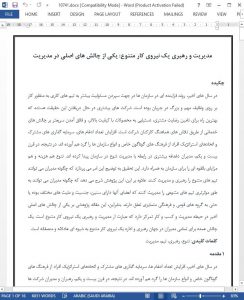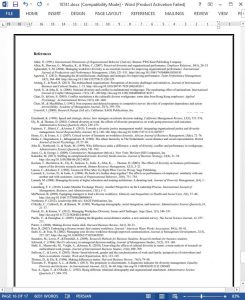Abstract
In the recent years, there has been an increasing trend in organizations to give teams more responsibility to work on major tasks. More companies are getting to recognize that the best way to meet customer satisfaction, higher quality products, and faster service challenges is through coordinated efforts of employees. The increasing number of mergers, joint ventures and strategic alliances is bringing people from distinct cultures and types of organizations together. As a result, in the twenty first century managers have become more concerned with managing diversity in organizations. Diversity offers both potential costs and benefits for the organization. This research explains how managers can lead and manage diverse teams. Further, it shows how managers could manage more effectively diverse team whose members have different ages, genders and nationalities or even belong to distinct ethnic or cultural groups. Therefore, this research paper is focusing on one of the main recent challenges in management and business, which is managing and leading a diverse workforce. As a major challenge for all mangers in the world is to lead and treat a diverse workforce in an equitable and fair manner.
1. Introduction
In the recent years, the increasing number of mergers, joint ventures and strategic alliances is bringing people from distinct cultures and types of organizations together. As a result, in the twenty first century leaders has become more concerned with managing diversity in the organizations (Yukl, 2001). Workplace diversity refers to the variety of differences among people in an organization. Diversity could be related to some factors including: age, gender, culture, education, employee status, physical appearance, family status, regional origin, national origin, thinking style, religion, race and more (Agrawal, 2012).
5. Conclusion
Effective managers can better manage diversity through providing training programs for the team members. Such programs should provide formal approaches for understanding diversity problems. Additionally, they should also highlight the importance of tolerating cultural differences, and provide ways that explain how members can respond to these differences (Yukl, 2001). Moreover, managers should always to try to make the most of the team differences. This could be done through identifying first the differences among the members of the teams. Further, managers should help the team members to accept, and understand these individual differences. Afterwards, they should maximize the potential of the group by finding ways to capitalize on diverse skills, viewpoints and backgrounds (Zenger et al., 1994). Through following the precedent mentioned steps leaders would be able to leverage the diversity in teams as an asset.










